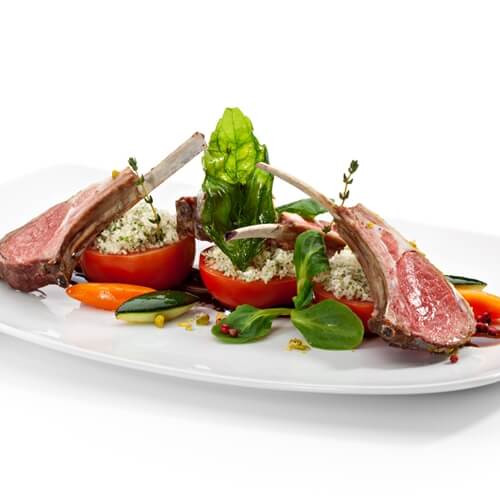4 Tips for Beautiful Plating
When you cook a masterpiece, you don’t just want it to taste amazing, you want it to look attractive as well. The human appetite is partially stimulated by sight. Plating your dishes in an appealing, artistic way is part of the culinary process. Learn the basics of presenting your food while taking online culinary courses. Here are a few tips:
1. Choose the right plate
The plate – or bowl – you use makes a difference in presentation. Large, white plates are generally a solid choice. Colored dishes can obscure the tone of the food. Try plating the same dish once on a colored plate and again on a white one. You’ll notice that the food on the colored dish looks washed out whereas the other looks vibrant. You can use whatever shape of dish you prefer as long as they are large and white. The size matters because it gives you more room to work.
Bowls are great for soup, ice cream or any other liquid, but be careful. Bowls force liquid and other heavy items to fall to the bottom while everything else floats on top. Take a salad, for example. If you place it in a bowl, the dressing will drip to the bottom and make those low leaves soggy. Any nuts, fruit or other weighty ingredients will also fall to the bottom. Your first few mouthfuls will be bland, while the rest will be overpowered with dressing.
2. Use your hands
While tongs are a great instrument to cook with, your hands are better suited for plating. They give you more control over how the food is arranged. Wash your hands before you plate then enjoy moving the various components around the dish.
3. Create levels
Rather than laying your julienned beet salad on the plate, consider stacking the food to create height on the dish. Some components can rest on the lowest level (purees), some on a mid level (stacked veggies or a salad) and others will stand tall (an upright rack of lamb). These varying heights will add interest to the look of the dish.
4. Be colorful
Colorful food usually indicates that the dish has a balance of nutrients. It also looks more interesting than a monochromatic plate. Choose naturally bright foods and play those up as the star of the plating. You can ensure your produce remains brightly colored by choosing fresh ingredients and cooking them correctly. For example, steaming and blanching bring out the natural color instead of diminishing it.


